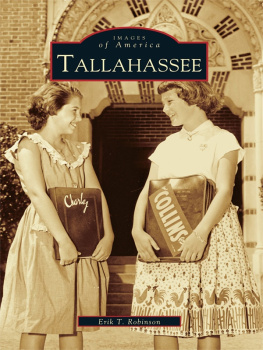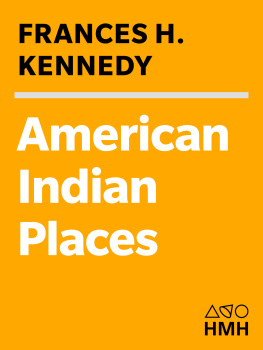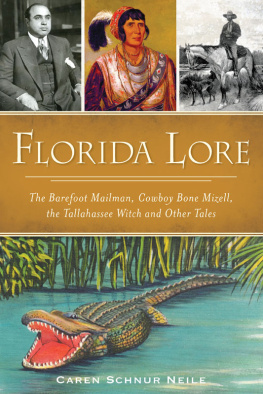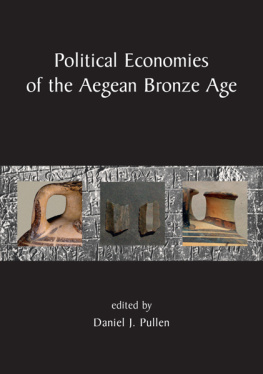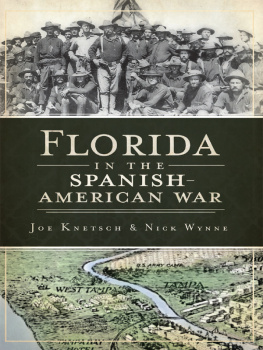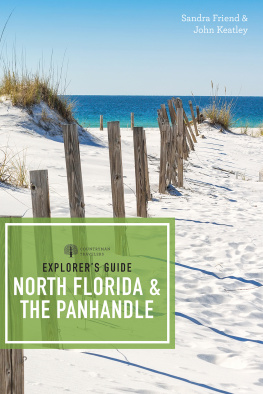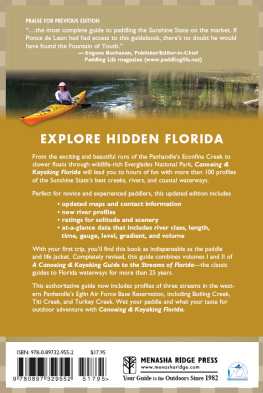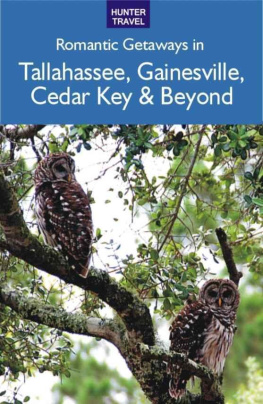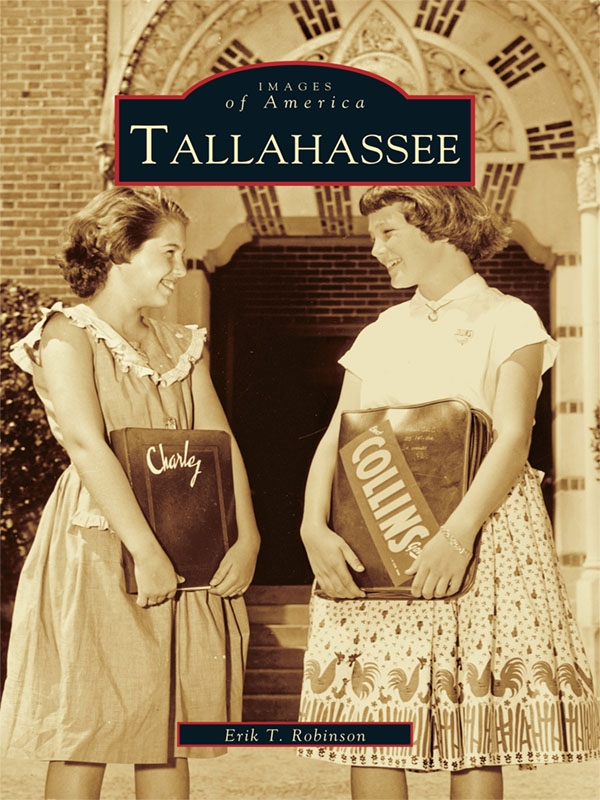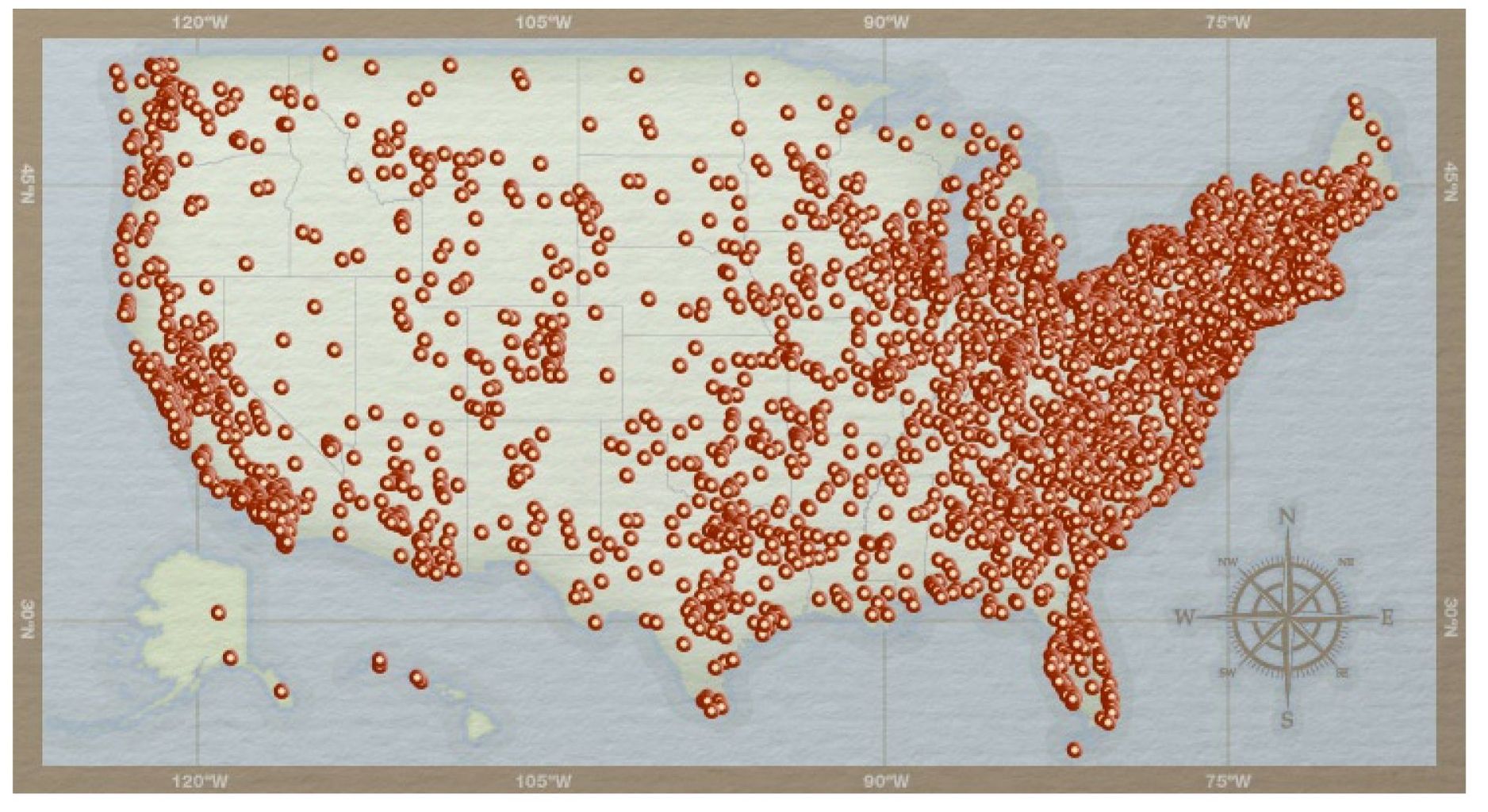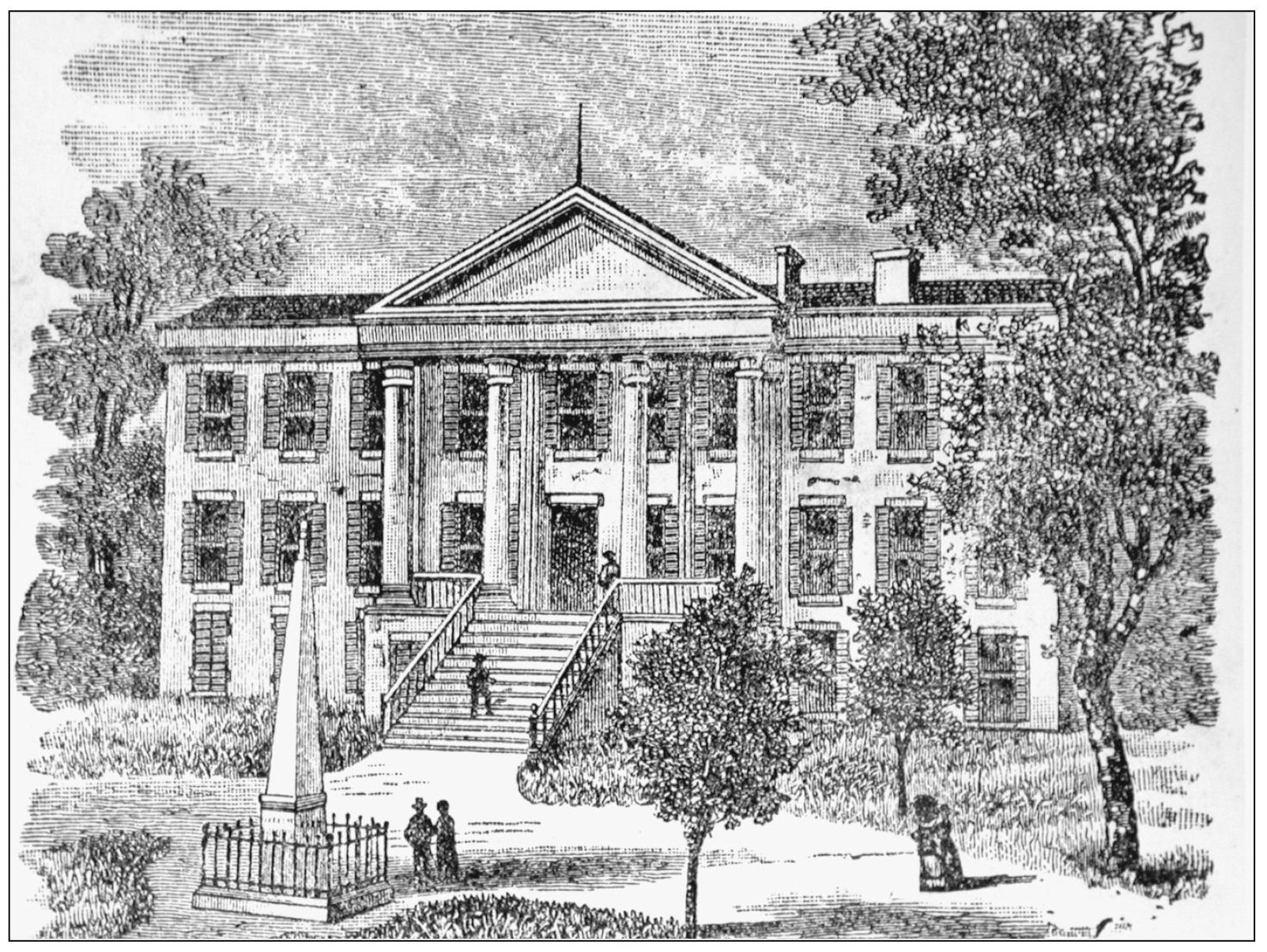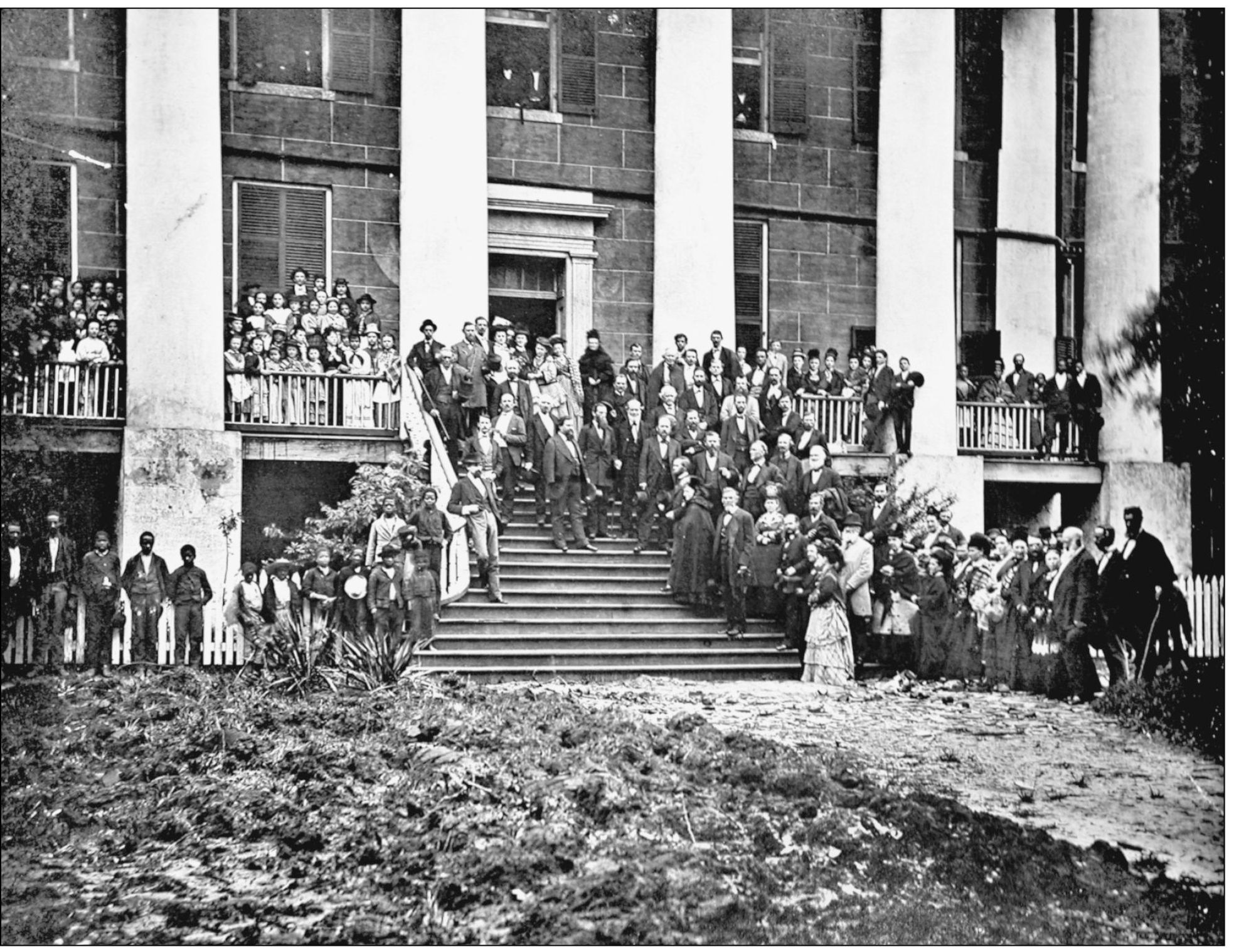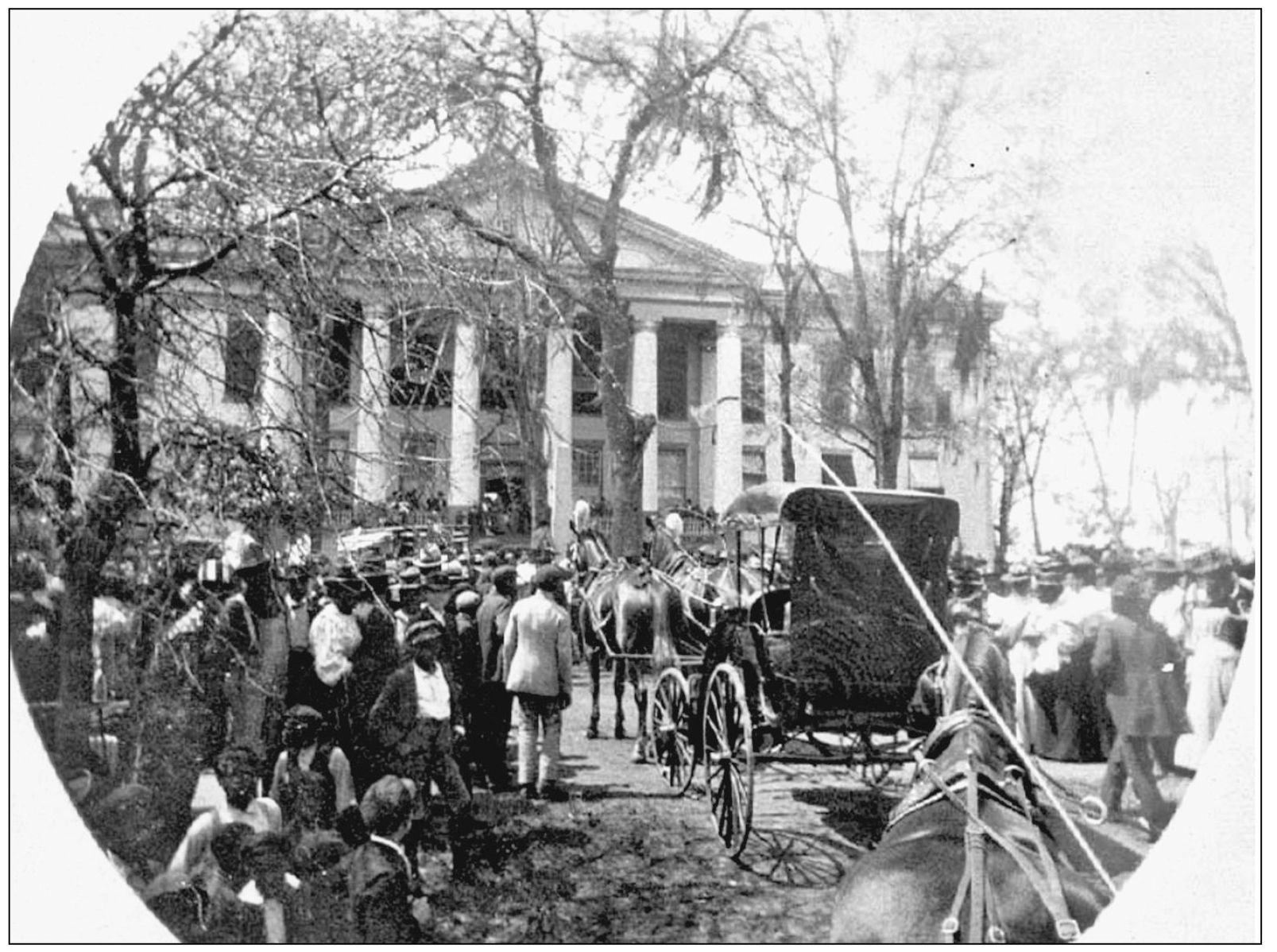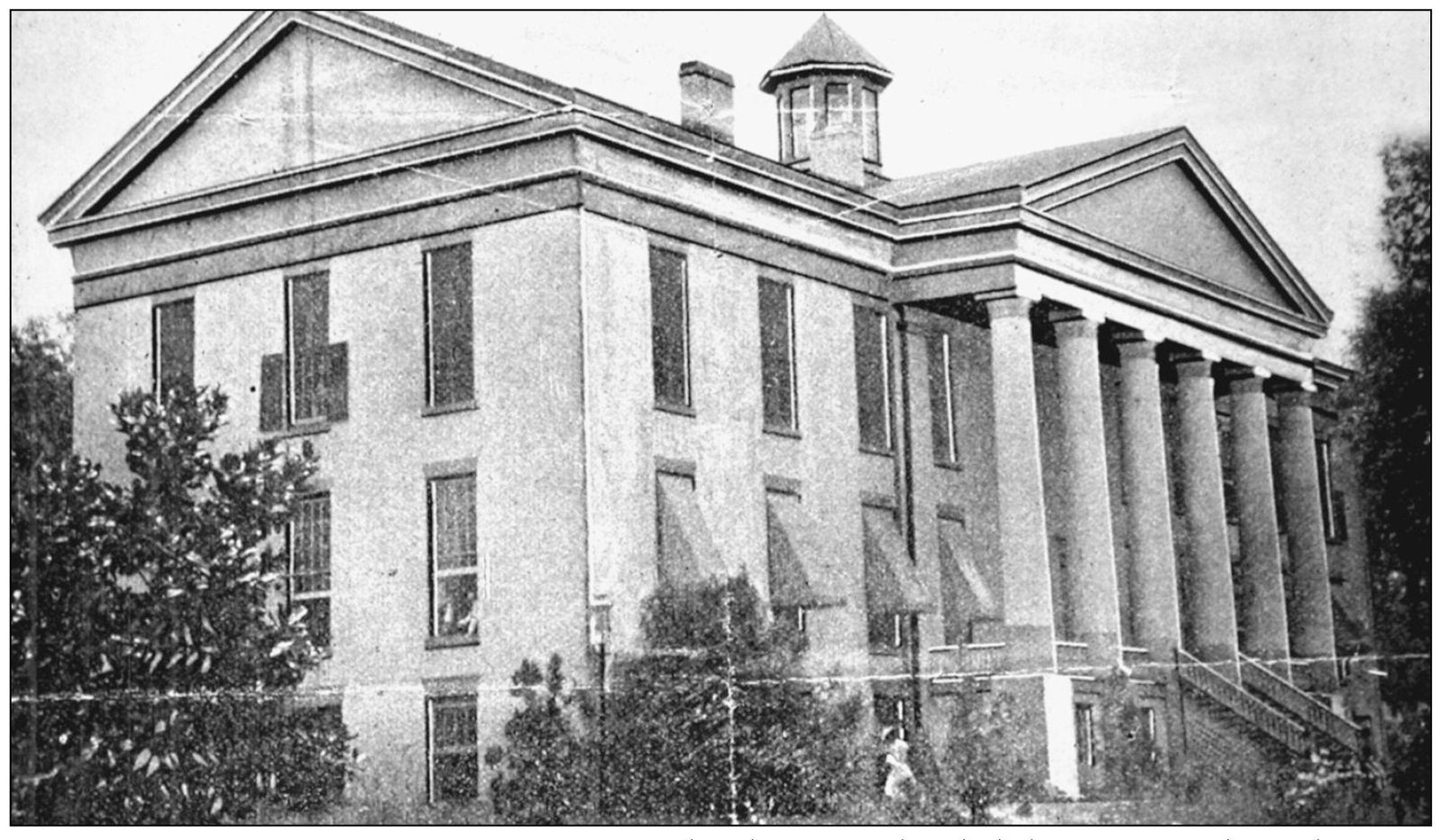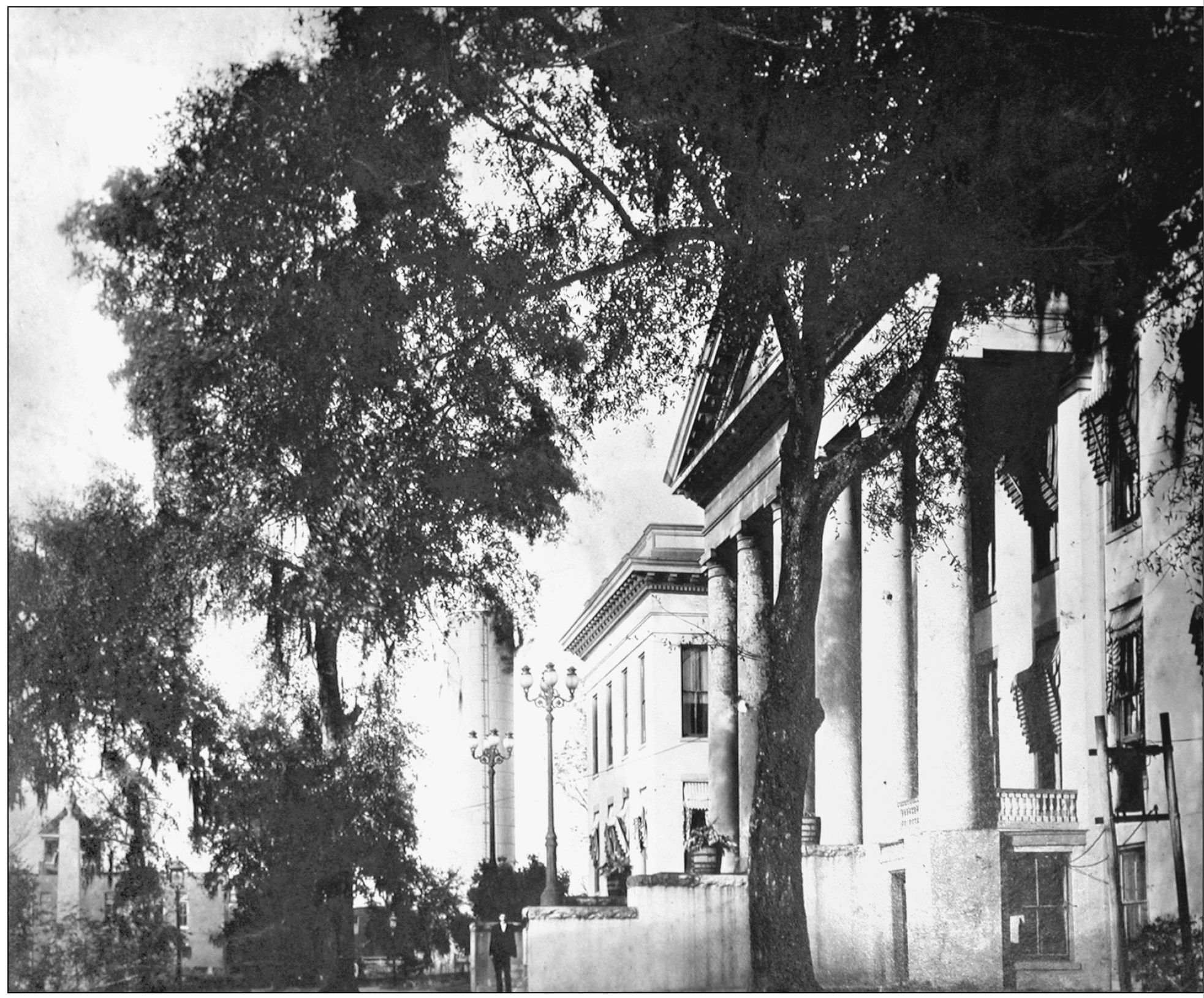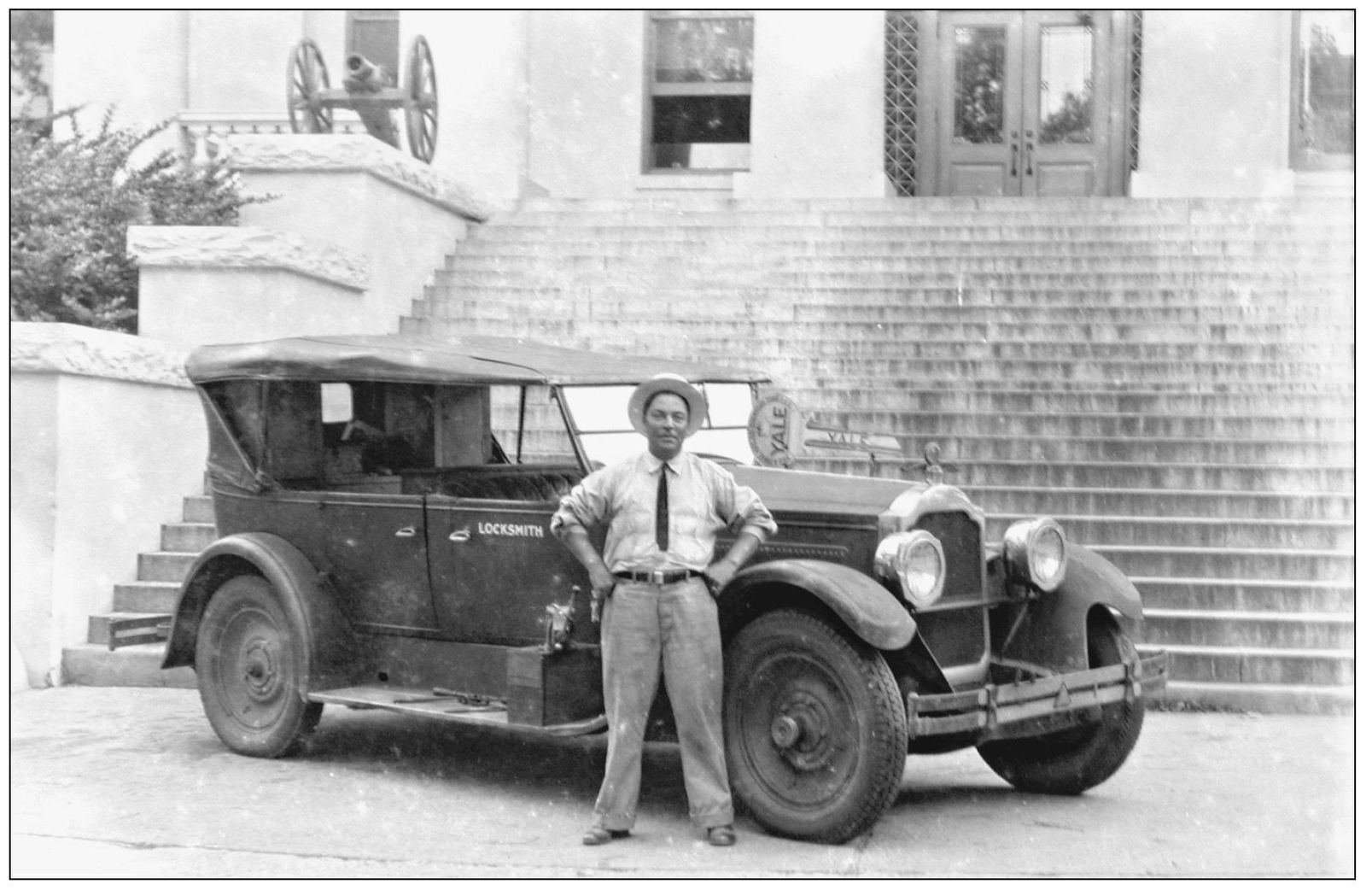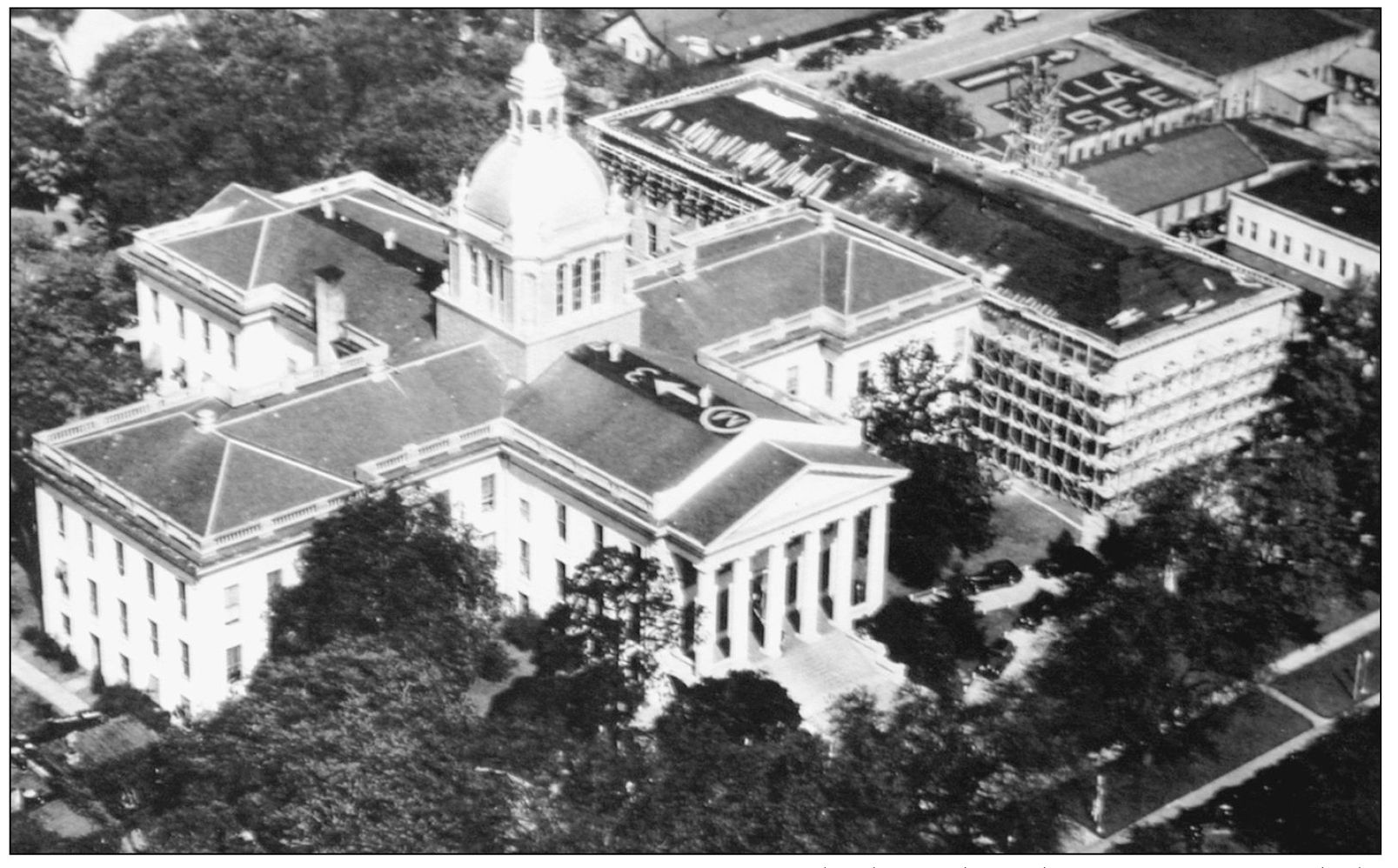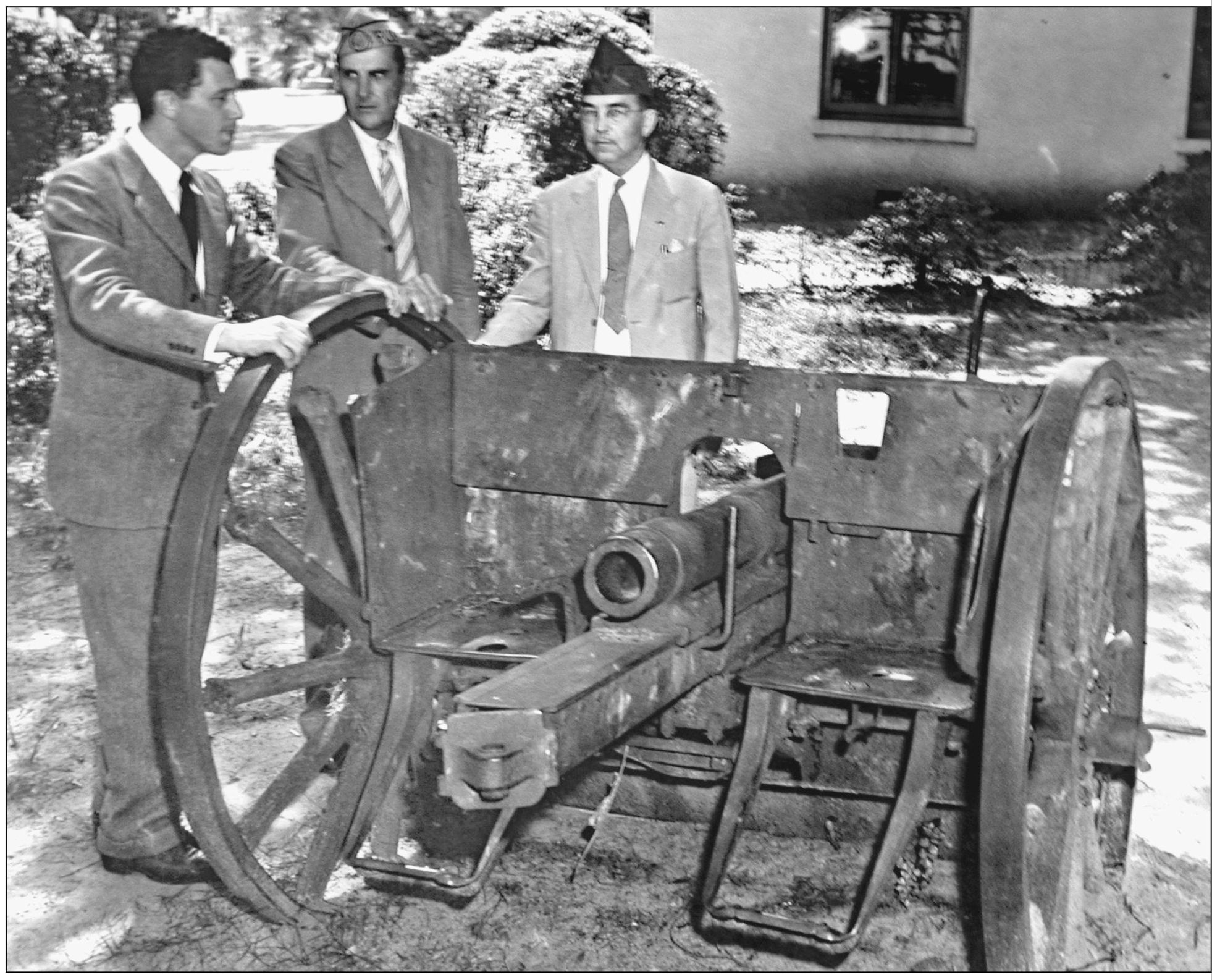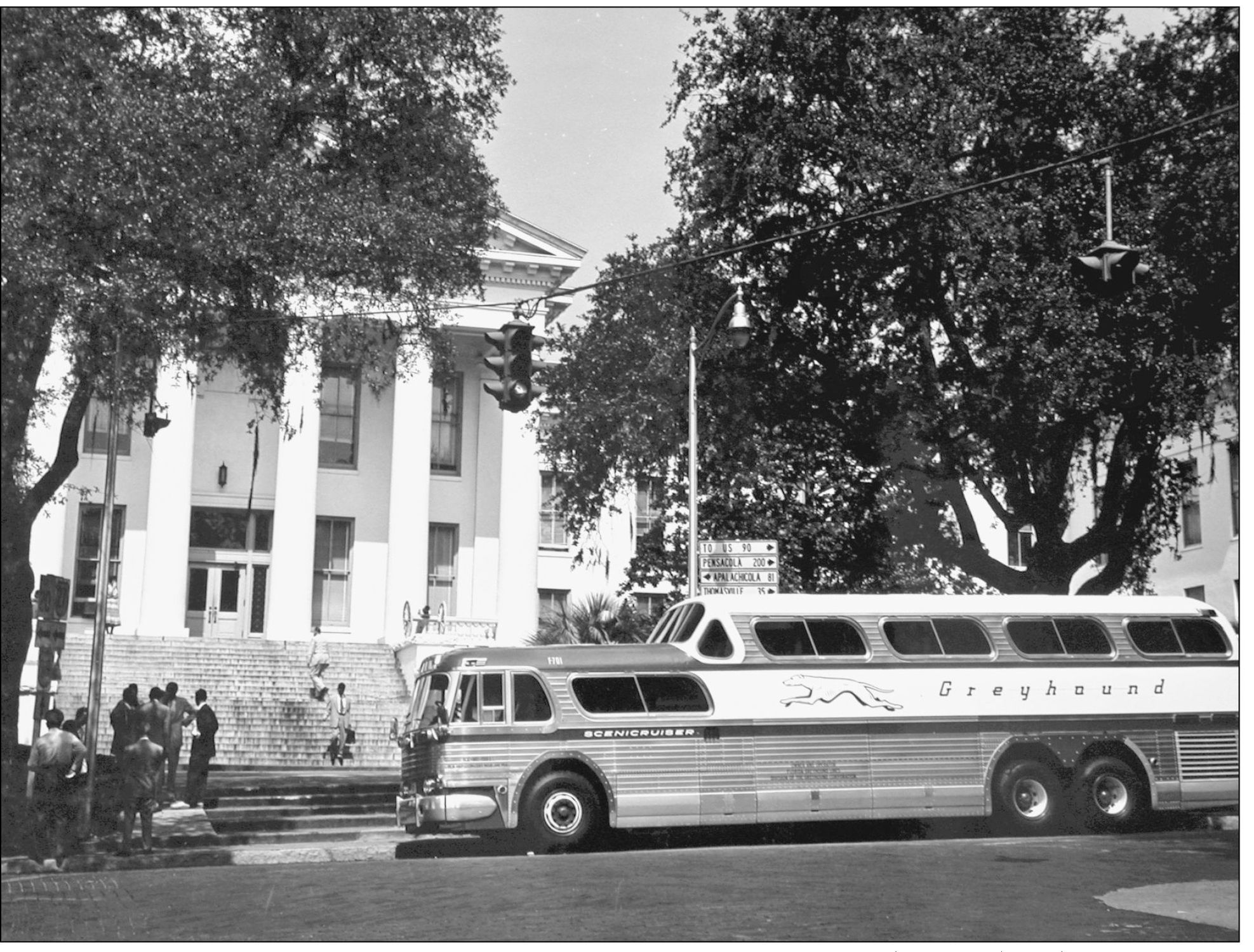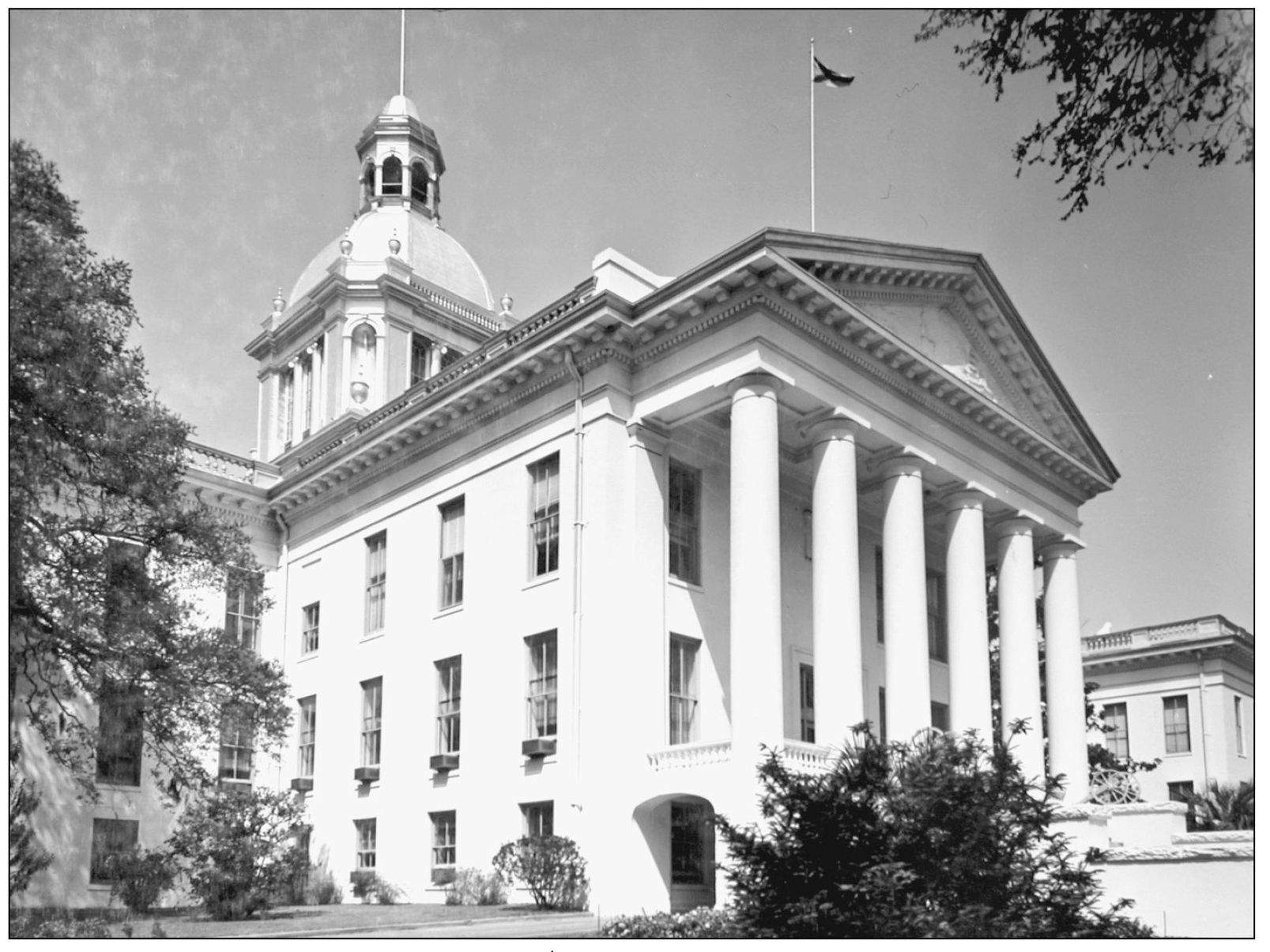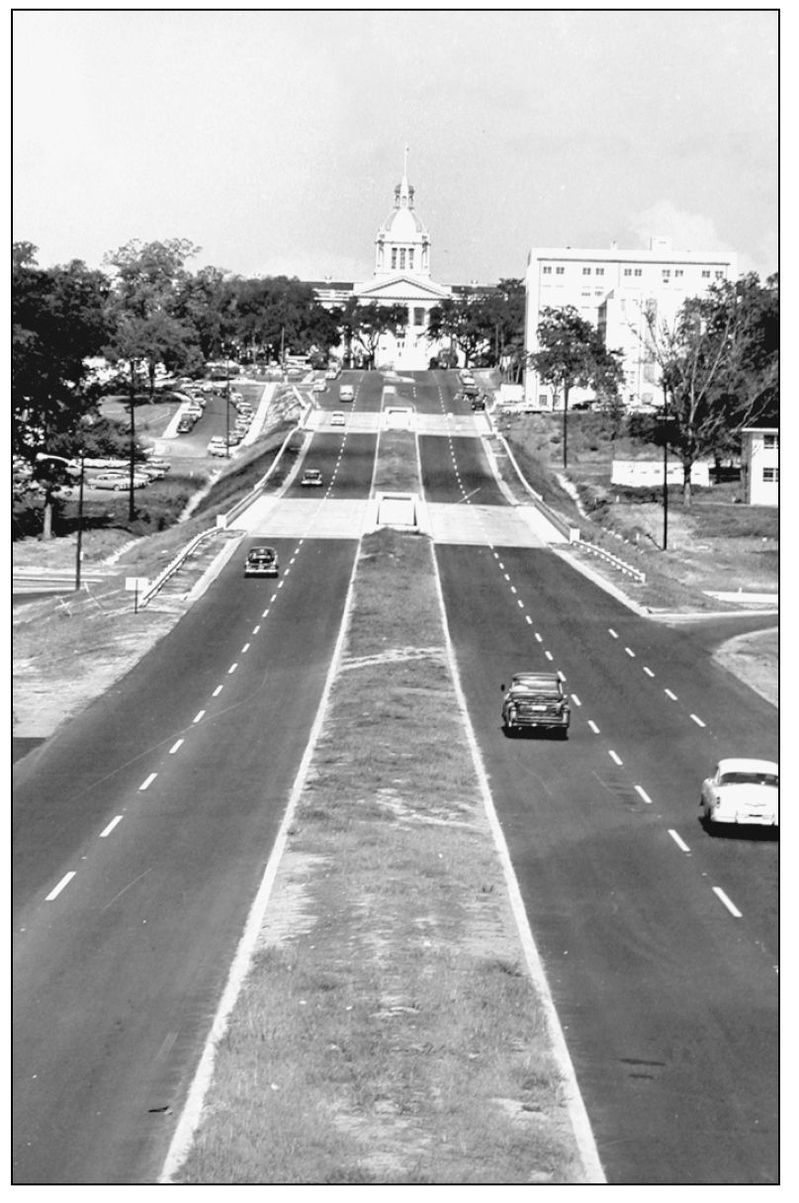One
THE CAPITOL AND CENTER OF GOVERNMENT
VIEW OF THE STATE CAPITOL BUILDING, C. 1885. This lithograph shows only four columns on the front, though the building had six. The monument in the front yard is still on view today; it memorializes Capt. John Parkhill, killed in the Third Seminole War in 1857.
HARRIET BEECHER STOWE ON THE STEPS OF THE OLD CAPITOL. The famed author of Uncle Toms Cabin visited Florida as a winter tourist for many years after the Civil War. She lived along the St. Johns River south of Jacksonville. Here she visits Tallahassee on April 10, 1874.
VIEW OF TALLAHASSEE FROM THE EAST STEPS OF THE CAPITOL BUILDING C. 18751880. The fence kept out wandering cows and other livestock. Apalachee Parkway now graces the view from the capitol steps. Many trees still block city buildings from view.
PRESIDENT WILLIAM MCKINLEY VISITS THE CAPITOL MARCH 27, 1899. Gov. William Bloxham waits for him on the capitol steps. The circular photograph was taken from the carriage behind the Presidents with a Kodak No. 1, the first consumer camera ever marketed.
THE 1891 CUPOLA ON TOP THE CAPITOL. Florida voters decided the issue of where the state capital should be located in 1900. This photograph of the state house appeared on the cover of a pamphlet intended to persuade voters to keep the capital in Tallahassee. It worked.
ADDITIONS TO THE CAPITOL IN 1902. After Tallahassee triumphed in the 1900 vote to keep the capital, the 1901 legislature voted the extravagant sum of $75,000 to more than double the size of the capitol building, including a large and beautiful new dome.
TALLAHASSEE LOCKSMITH AT THE EAST STEPS OF THE CAPITOL, C. 19271930. Many thousands of people have posed for their picture in front of the capitol. This tradesman stands proudly with his 1927 Packard Single Eight. Behind him rests one of a pair of Civil Warera mountain howitzers that graced the capitol entrance from about 1905 to 1979. They are now part of the Museum of Florida History collection in Tallahassee.
NEW ADDITIONS TO THE CAPITOL IN 1936. State officials planned two huge new wings to help serve Floridas growing population. This one, for the House of Representatives, went up on schedule. The second wing, for the Senate, had to wait until after World War II.
WORLD WAR I TROPHY CANNON ON THE CAPITOL GROUNDS, SEPTEMBER 1, 1942. State Senator LeRoy Collins (left), local American Legion Commander J. Ralph Hamlin (center), and Florida Secretary of State R.A. Gray (right) served on the Leon County Defense Councils Salvage Committee. They sent this German Model 1917 Krupp field artillery piece to be melted down and used for United States Army munitions in World War II.
GREYHOUND SCENICRUISER IN FRONT OF THE CAPITOL, 1954. The capitol, with state government in operation, local museums, and historic sites, has long been a destination for school groups and others interested in history, as well as history-in-the-making.
FLAGS FLYING AT THE CAPITOL, 1954. The state flag never flew regularly from the dome until Gov. Jeb Bush ordered it flown in 1999. Instead, it occupied a place of honor over the east portico of the building. When the old capitol was restored to its 1902 appearance, workers removed the portico and its flagpole. Notice as well the start of air conditioning in the building with a few window units in evidence.
APALACHEE PARKWAY AND THE CAPITOL FROM THE SEABOARD AIRLINE RAILROAD BRIDGE, 1958. Though the area is now much more built up, the road remains a dramatic and vivid approach to the ceremonial center of state government.

